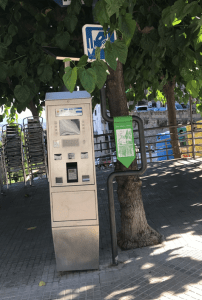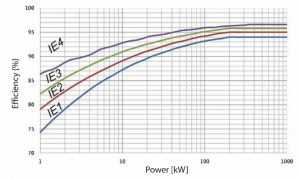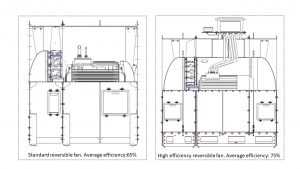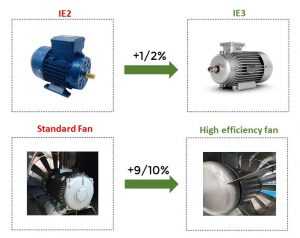Since the beginning of the 21st century, there has been a global awareness of the need to save energy in practically every field of application. Growing industrialisation and the massification of production processes entail a continuous increase in energy consumption, the most significant consequences of which result in environmental deterioration and the corresponding economic cost.
by Javier Torre – ZITRON Area Manager

Since the beginning of the 21st century, there has been a global awareness of the need to save energy in practically every field of application. Growing industrialisation and the massification of production processes entail a continuous increase in energy consumption, the most significant consequences of which result in environmental deterioration and the corresponding economic cost.
Regarding the latter, its uncontrolled growth in recent months is worth highlighting, and with it the increase in energy bills both for users in their homes and for large end consumers, whether they are factories, administrations or, in general, all types of companies.
It is logical, therefore, that measures to reduce or at least optimise energy consumption are gradually being integrated into every process that can be improved, which is almost all of them. The different measures range from the basic application of common sense (e.g. switching off the light when leaving a room) to the implementation of the latest technology or complex algorithms to reduce energy consumption.
The involvement of governments, the different administrations and working groups play a key role in establishing guidelines aimed at this energy reduction, either by eliminating processes with high energy costs and little productive value, or by optimising these processes, or by applying clean and non-polluting energies.
However, the goodwill behind these actions does not always result in the desired improvements, either through improvisation or lack of foresight.
ENERGY CONSUMPTION IN METRO AND RAILWAY LINES
In the particular case of this type of infrastructure, and due to the fact that they are installations intended for public use, they must provide continuous coverage practically all day long and every day of the year, which means high energy consumption throughout the year, especially in large cities.
Within the energy needs, a distinction must be made between the traction area, which in a simplified way brings together the energy necessary to move the trains, and the station area, which includes the installations necessary for the operation and safety of the stations.
If we go deeper into the characterisation of the station area, we will see that its consumption is clearly marked by ventilation (34% of consumption), lighting (33%) and stairs (12%).

It is clear therefore that the energy impact on the intervention of these 3 issues will be very important in cutting energy costs.
At present, the implementation of LED technology already leads to great savings in terms of lighting, as well as sensorisation measures for the activation of escalators, so that they only start up when they detect the proximity of the user.
But what about the ventilation?
EUROPEAN COMMISSION REGULATION 2019/1781
This regulation, which is of great importance in promoting energy savings, establishes a series of minimum efficiencies for electric motors for different applications, including fans.
For some years now, all motors have been required to have an efficiency class of IE3, and in some cases IE2 (e.g. when driven by frequency converters). Since July 2021, these exceptions have been eliminated, so that all motors must now be class IE3.
In a later phase, from 1 July 2023, installed motors between 75 and 200 kW will have to go up a step in terms of energy efficiency and be class IE4.
The evolution of the performance according to their energy classification is clearly shown in the graph below:

Fans installed in subways and railway lines fall within a wide range of diameters and power ratings, but we could roughly delimit the most common power range, which would be between 22 kW and 250 kW. For these power ratings, the improvement in efficiency between the different efficiency classes is in the order of 1 or 2%. In other words, IE4 has a higher efficiency than IE3, between 1-2% approximately, identical to the improvement between IE3 and IE2.
In other words, the application of this regulation will lead to significant energy savings compared to older installations, in the most relevant cases by more than 4-5 percentage points.
THE IMPORTANCE OF FAN EFFICIENCY
The measure described in the previous paragraphs is essential to reduce energy costs, but complementary measures must be considered to reduce consumption far beyond the regulation of the motors.
The most significant measure relates to the aerodynamic design of the fans, a feature that receives very little attention when defining a ventilation project, but which is of enormous importance from an energy point of view.
As a general rule, a fan is defined by its flow rate and pressure, specifying the most elementary constructive characteristics (casing material, unidirectional or reversible impeller, fire resistance, corrosion protection, …). These specifications allow the installation of any fan that can give the required duty point as a consequence of its generality. However, the power absorbed by the fan or, in other words, the energy it consumes during operation, is not taken into account as a determining factor. This is where the design of the fan is of great importance, whereby the constructional differences between a standard fan and a high efficiency fan are important and these differences result in performance.

High-performance fans are characterised by minimising aerodynamic losses as the air circulates inside the fan. For this reason, the motor is encapsulated in an inner casing, elliptical directives are incorporated and a symmetrical design is sought so that, in the case of reversible fans, the best performance is achieved in both directions of rotation.
In view of the above, the application of the electric motor regulation is necessary, but the scope for energy improvement is significantly greater if the fan design is taken into account.

Therefore, it is of crucial importance to pay attention to the aerodynamic design of the fans as this factor has a major impact on the final energy consumption.
Other measures that also help to improve these savings are those related to the architecture of the ventilation shafts. In many cases, the aerodynamic circuit is plagued by right angles, narrowing, obstacles, etc., which only generate turbulence and load losses, and which end up being reflected in higher power consumption of the fan. Precautions such as smoothing right angles and eliminating narrowing have a low cost but with great benefits from an energy point of view.
All these aspects, fan efficiency and shaft design, are issues that must be taken into account from the beginning when defining a project, which is why the involvement and coordination of all those who define it (Administrations, Operators, Engineering, …) is necessary for it to actually be executed.
Successful energy saving is a common benefit not only in terms of economic cost but also in terms of environmental sustainability, so it is imperative that we all do our part.
Share on:



